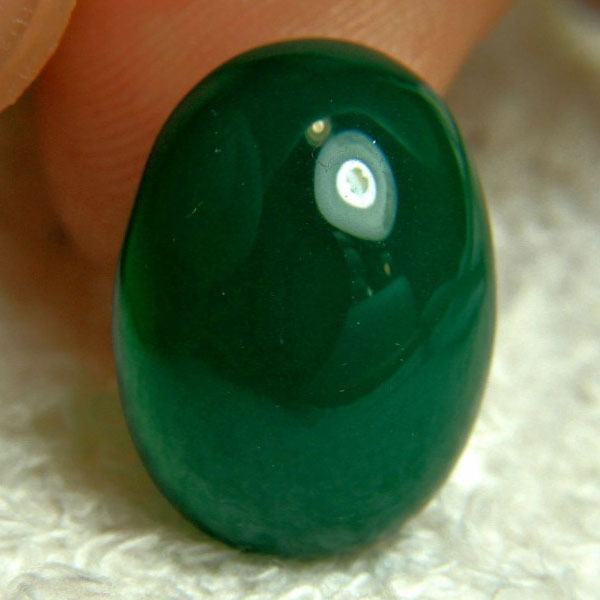Lab Created Jade Green GJADE
Total: $24.64 – $102.86
GEMSTONE DETAIL
- Origin: Grown in Lab. Also known as reconstructed stone.
- Chemical Composition: Natural mineral compound + Resin
- Dimensions: 2mm to 12mm
- Grade: AAA
- Clarity: Opaque
- Shape: Can do all shapes
- Make: Very Good
- Symmetry: Very Good
- Cut: Very Good
- Polish: Very Good
- Stock Postion: Not all sizes are in stock at all times. You can email us to check for stock position before placing your order.
Lab-Grown Jade
Jade is a mineral that forms from a silicate of magnesium and calcium (nephrite) or aluminum and sodium (jadeite). It is one of the oldest and most versatile earth-mined stones known to man.
Jade’s hardness, physical appeal, and decent refractive index makes it a top option for jewelry making, carving, and much more.
Current demand for jade jewelry and art pieces would have been impossible to fulfil, since most known natural mining sites suffered extensive depletion.
Check out this article for more information about lab-grown jade, its history, maintenance tips, and other vital details. Such information could prove useful, especially if you plan to own jade pieces or know more about its properties.
History of Lab-Grown Jade
Ancient China considered jade as an imperial item and the stone featured heavily in the era’s art. Jade carvings and rings from as early as 9AD are on display across museums in China and around the world.
Most jade deposits during the ancient Chinese era went into making ceremonial objects, utilitarian tools, indoor decorative items, and even burial suits. Jade was also a popular item for creating different kinds of items in Burma, Korea, Japan, and India across different centuries.
How are Lab-Grown Jades Made?
Lab-grown jade is a combination of calcium, magnesium, and an iron-rich amphibole. The mineral series, commonly called tremolite or actinolite (a form of asbestos) combines to create lab-grown jade crystals under controlled heat and pressure.
Several methods also exist to enhance jade stones to provide a deeper green color or lighten its hue.
Uses of Lab-Grown Jade
Skilled artisans can work jade stones into different kinds of ornamental stones. Jade is also a popular collector’s item, especially ancient carvings and rings.
Other uses of jade include:
- As loose gemstones,
- For decorative details in art pieces,
- Material for sculpting small to medium-sized
Chemical Properties of Lab Jade
- Main element composition: (a silicate of magnesium and calcium in amphibole group of minerals), or jadeite (a silicate of aluminum and sodium in pyroxene group of minerals)
- Crystal system: Monoclinic
- Color: Varies, mostly green to white
- Crystal habit: Inter-grown grainy or fine fibrous aggregate
- Cleavage: None
- Fracture: Splintery
- Mohs scale hardness: 6 – 7
- Diaphaneity: Translucent, opaque
- Specific gravity: 2.9 – 3.38
- Refractive index: 1.600–1.688
- Birefringence: 0.020–0.027
- Pleochroism: Absent
- Dispersion: None
Maintenance Tips for Lab Jade
Lab-grown jade need regular maintenance to preserve its appearance. The maintenance jade needs depend on different factors. Clean your jade gemstones with any of these methods described below:
Polishing
You can use a soft polishing cloth to clean dirt from your jade jewelry or carvings. First, gently rub the gemstone’s surface with the soft cotton cloth to ensure all dry dirt comes off. You can also make use of polishing cloths to clean spaces beneath your jewelry, especially when grime builds up at its setting area.
Polishing cloths remain the easiest and safest way to maintain lab-grown jade crystals and other precious or semi-precious stones.
Liquid soap
Follow these steps to clean jade crystals with water and liquid soap:
- Add drops of liquid soap into ½ cup of water,
- Stir the solution and dip one part of a soft cotton cloth in,
- Rub the soap solution over your jade, cleaning off all spots of dirt and grime,
- Use the other dry half of the cloth to wipe off the soap solution
Following these steps provides basic maintenance for your jade stones. You may need to consult experienced jewelers for more information to preserve the overall appearance of your jade items.













